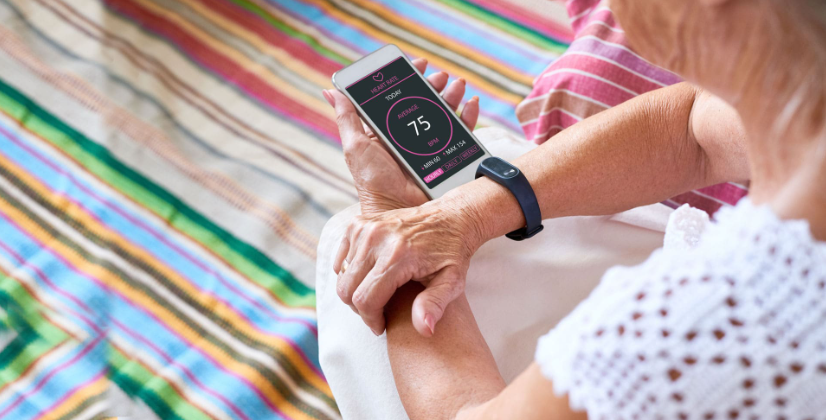The global mobile health market is expected to reach $ 189 billion by 2025, according to the Statista website. Mobile technology plays an important role in providing care during a pandemic, and the ever-increasing prevalence of smartphones, tablets, and other devices ensures that it remains important. Healthcare professionals, therefore, need to work to effectively integrate mobile technologies into their healthcare strategies.
What is Mobile Health?
Mobile healthcare uses technical devices to monitor health, collect health-related data and provide remote care. It enables nursing leaders, physicians, and patients to create and maintain health and wellness strategies outside the clinical environment.
Elements Of Mobile Health
Smartphones are one of the most popular devices when it comes to mobile health. This is partly due to its ubiquitous nature, as 85% of Americans own a smartphone. This percentage will increase as the demographic group gets younger: 95% of adults aged 30-49 and 96% of adults aged 18-29 have a smartphone.
Another feature of mobile health is portable technology. Fitness trackers like Fitbit and smartwatches like Apple Watch are popular devices in this category, worn by 21% of American adults. They are especially popular with young people: 28% of adults aged 18-34 use the device, compared to 10% of adults aged 55 and over. In addition, wearable technology is not directly related to fitness trackers; This category includes biomedical systems that control blood pressure, monitor vital signs, control diabetes, and detect heart attacks.
The Purpose Of Mobile Health
The purpose of mobile health depends on the group. For patients, it revolves around proactive health concepts such as nutrition and health, telehealth, chronic diseases, and drug management, symptom diagnosis, and access to medical helplines. Healthcare professionals see mobile health as a way to improve the effectiveness of care. They do this by keeping medical records, patient monitoring, information management, time management, referrals, medical training, communication, and clinical decision-making.
Trends In Mobile Technologies In Healthcare
As technology advances, so does the definition of mobile health. The bright future of mobile devices can benefit patients and healthcare providers.
The future of mobile health: Examples of influencing factors
The advent of cloud computing and the Internet of Things (IoT) has revolutionized mobile health. Innovations such as electronic health records (EHR), data automation, and data storage make tracking and cataloging large amounts of data more efficient.
Another major area that continues to affect mobile health is the use of big data and artificial intelligence (AI) methods and applications. High-level elements – the open-source Apache Mahout machine learning library, artificial intelligence-based platforms such as Skytree and Big ML, and machine learning algorithms to name a few – have not only contributed to data collection from multiple sources but have also helped ensure to make the data useful and accurate.
SEE: Top Email Marketing Companies In USA – Top 5 Companies
Of course, social media continues to play an important role in the future of mobile health. These popular platforms can improve the concept in several ways, including awareness of new and emerging healthcare, combating misinformation. Expanding the reach of existing resources, answering common questions, monitoring public health, and involving patients.
What Benefits Can Mobile Healthcare Bring?
The benefits of a mobile fitness strategy outweigh the potential problems. These benefits somehow address the healthcare professional’s ultimate goal: to help improve patient outcomes.
The benefits of mobile health vary between patients and healthcare providers. Benefits for the patient include better patient-provider communication, fewer hospital visits, lower patient costs, and better access. The benefits of healthcare providers include improved patient satisfaction, reduced hospital costs, increased revenue sources, and reduced risk of infections and diseases through telehealth visits.
Examples of health clinics with successful integrated mobile health technology programs
In 2007, the Mayo Clinic implemented Telestroke, a telemedicine program dedicated to treating stroke patients. The program, which began as a clinical trial on an Arizona clinic campus, has been expanded to include physicians from the Florida and Minnesota campuses. Today, doctors on these campuses treat more than 1,500 patients a year in 27 remote hospitals in five states.
Another example of the success of integrated mobile healthcare technology is the Charleston Area Medical Center. The organization is implementing a mobile health platform to reduce redistribution in patients with chronic obstructive pulmonary disease (COPD) and congestive heart failure (CHF). After the introduction, the center recorded a 22% reduction in COPD remissions. The center also saw a 30% reduction in CHF orders.
The Future Of Healthcare Today
Today, mobile technology is making great strides in improving healthcare and its future in this area is clear. Whether this technology serves to inform patients about their daily health or helps healthcare professionals stay organized when informing the public. It can help provide patients with better care than ever before.
SEE: Facebook Advert Library – Use Advert Library To Beat Your Competitors





